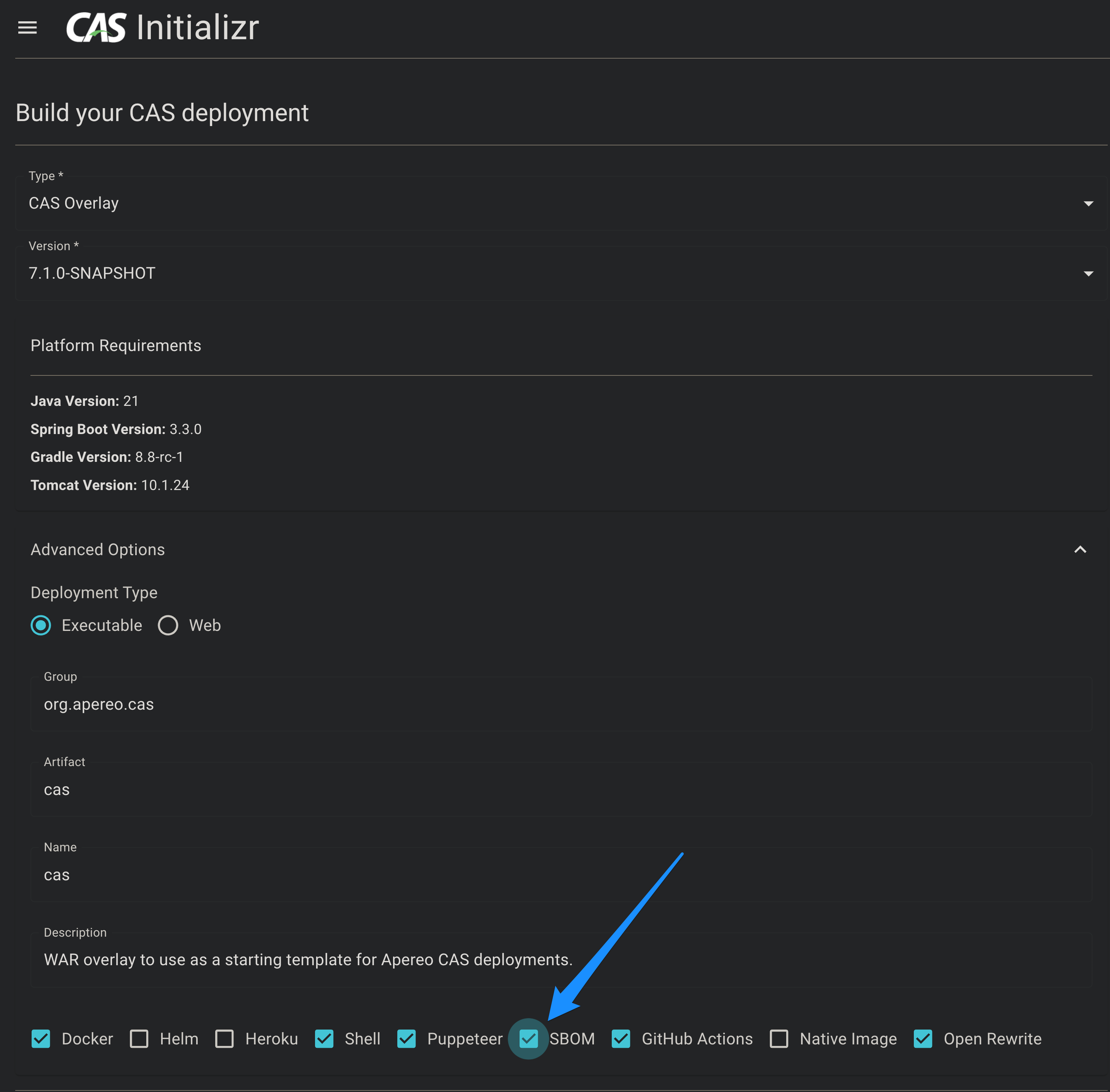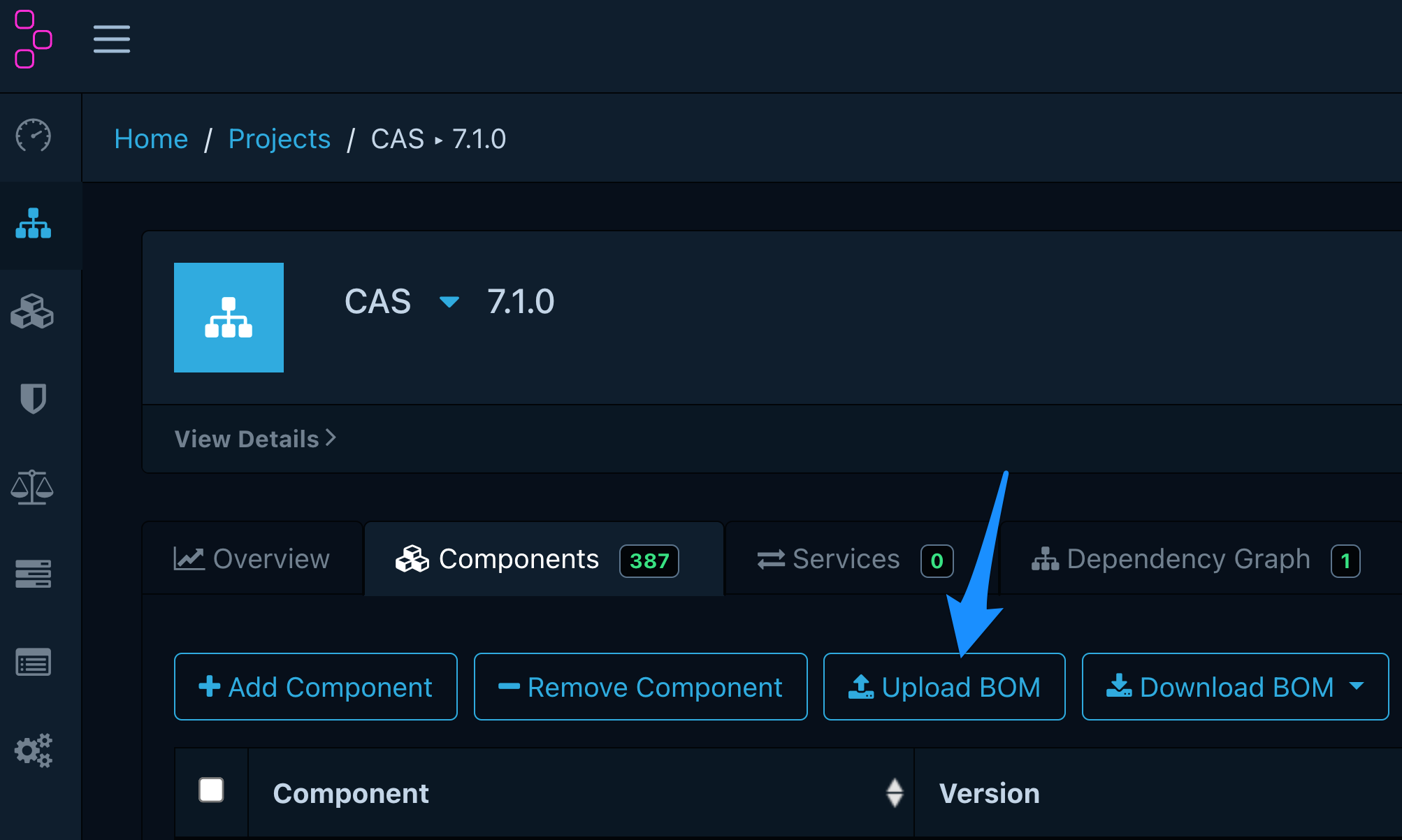Your browser is blocking content on this website. Please check your browser settings and try again.
Ensuring the security and integrity of the components in your Apereo CAS deployment today is more crucial than ever. A Software Bill of Materials (SBOM) serves as a comprehensive inventory of all the components in a software application, akin to a list of ingredients in a recipe. SBOMs provide visibility into the dependencies and libraries, facilitating better vulnerability management and compliance.
The most recent releases of Apereo CAS take advantage of and offer SBOM support offered by Spring Boot using a format known as CycloneDX. This is a popular format for SBOMs and an open standard designed for ease of use and interoperability. CycloneDX SBOMs offer a detailed representation of software components, making it easier for organizations to manage their security posture.
Apereo CAS can generate SBOMs via Spring Boot, and the resulting document can then be utilized by tools like Dependency-Track from OWASP. While this is not the only dependency tracking and visualization tool, it is nonetheless a powerful OWASP tool for managing vulnerabilities in dependencies. It allows your team to monitor and ensure the CAS deployment is both robust and secure.
In this blog post, we’ll look at SBOM support in Apereo CAS and present a quick overview of how one can use CycloneDX SBOMs to integrate with Dependency-Track for a fortified security strategy.
This tutorial specifically focuses on:
- CAS
7.1.x - Java
21
Generating SBOMs
Recent versions of the CAS deployment Overlay project are able to offer SBOM support via the CAS Initializr:
Once you have generated the overlay, an SBOM will be automatically generated for your deployment and packaged with the CAS web application when you build:
./gradlew clean build
The resulting SBOM document is available and tagged under the id application.
SBOM Actuator
Apereo CAS via Spring Boot offers an sbom actuator endpoint that needs to be explicitly enabled and exposed in CAS configuration:
management.endpoint.sbom.enabled=true
management.endpoints.web.exposure.include=sbom
spring.security.user.name=casuser
spring.security.user.password=Mellon
cas.monitor.endpoints.endpoint.defaults.access=AUTHENTICATED
Next, when you deploy CAS you can download the SBOM document:
# Note the SBOM id used to download the document...
curl -LO -u casuser:Mellon https://sso.example.org/cas/actuator/sbom/application
This will provide you with an application file that contains the SBOM report. For this exercise, we are going to manually import the SBOM into a dependency-tracking tool like Dependency-Track from OWASP.
OWASP Dependency-Track
Dependency-Track is an intelligent Component Analysis platform that allows organizations to identify and reduce risk in the software supply chain. Dependency-Track takes a unique and highly beneficial approach by leveraging the capabilities of Software Bill of Materials (SBOM). This approach provides capabilities that traditional Software Composition Analysis (SCA) solutions cannot achieve.
Dependency-Track monitors component usage across all versions of every application in its portfolio in order to proactively identify risk across an organization. The platform has an API-first design and is ideal for use in CI/CD environments.
Deploying with Docker is the easiest and fastest method of getting started. No prerequisites are required other than a modern version of Docker:
# Downloads the latest Docker Compose file
curl -LO https://dependencytrack.org/docker-compose.yml
# Starts the stack using Docker Compose
docker-compose up
You can now navigate to http://localhost:8080, sign in with admin/admin and complete the account creation process. Then, navigate to the Projects screen, create one called CAS and upload your application SBOM document:
Now, you can browse the list of components, examine the dependency graph, and analyze the audited vulnerabilities present in your CAS deployment.
Need Help?
If you have questions about the contents and the topic of this blog post, or if you need additional guidance and support, feel free to send us a note and ask about consulting and support services.
So…
I hope this review was of some help to you and I am sure that both this post as well as the functionality it attempts to explain can be improved in any number of ways. Please feel free to engage and contribute as best as you can.
Happy Coding,
-
info@fawnoos.com
Monday-Friday
9am-6pm, Central European Time
7am-1pm, U.S. Eastern Time
-
+1 347 746 4665
Monday-Friday
9am-6pm, Central European Time

